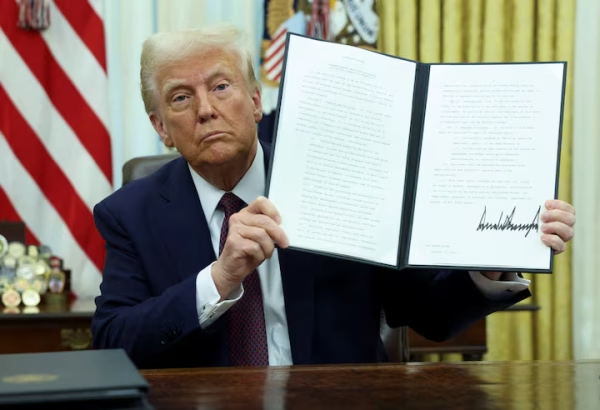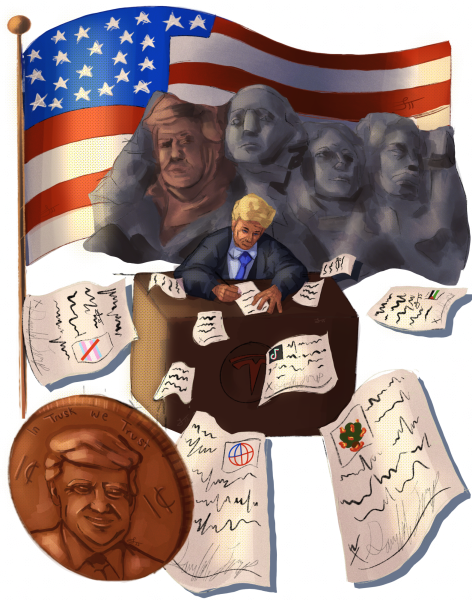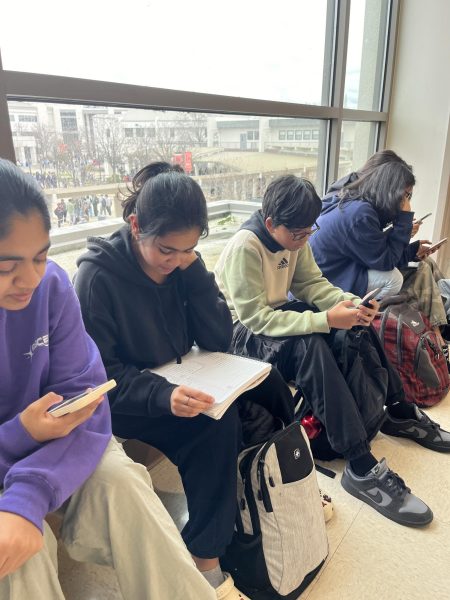The world’s response to COVID-19 has mixed results
China’s response has fared well, while the US and Brazil have struggle to control spread
News first broke of a “pneumonia of unknown cause” on Dec. 31, 2019, when a small media outlet from Wuhan, China, issued a statement on this new virus, alerting the World Health Organization and the rest of the world.
Three months later on March 19, California became the first American state to issue a state-wide quarantine due to COVID-19. Eventually, much of the rest of the United States followed, along with the rest of the world.
Although every major country implemented some kind of quarantine, not every country approached COVID-19 the same way. Some were more lenient, some more stringent.
Now that several vaccines are approved for use and being delivered nationwide, it’s a good time to look back at and review how different countries around the world responded to the pandemic.
China
This is where it all began, and as would be expected China was the country that began with the most cases. But as the majority of the world has been dealing with a massive second wave of cases, China sits back comfortably with only 12 new reported cases Dec. 18. By comparison, California alone reported a record 53,000+ in a single day earlier this week.
It is a wonder that the country that the virus started in has so few cases now. Their first quarantine began on Jan. 23 in Wuhan. It prevented all travelers from coming into or leaving the city. By the next day, a total of 15 Chinese cities shared the same restrictions.
The next level of lockdown began in early February. There were a total of four cities under the “passport” system, allowing only one person per household to leave their home every two days.
Along with the quarantines, China built specialty hospitals reserved for COVID-19 cases. One of these, the Huoshenshan Hospital, had 1,000 beds and was 323,000 square feet upon opening.
While China’s response was extremely successful internally and praised as such, they were also criticized for not being transparent enough about the virus. China was accused of hiding information and keeping their own citizens in the dark about the severity of the virus.
Even though they may not have been entirely truthful, the low numbers support China’s approach. It was extremely strict, but it was the most effective world-wide.
Italy
Italy was one of the countries that was hit the hardest the earliest. The first cases were reported on Jan. 31. In an immediate response, Italy suspended all flights to and from China hoping to prevent more cases.
Unfortunately, this did not stop the virus and on Feb. 22, the first European quarantine was put in place in 11 different municipalities in Northern Italy. On March 9, the quarantine was expanded to the rest of the country.
The Italian government was condemned by scientists from the WHO on several accounts, as their responses were deemed not strict enough. The WHO also criticized them for downplaying the severity of the virus.
Despite the criticism, Italy’s COVID-19 crisis had largely subsided by May. The quarantine likely prevented many deaths and helped limit the cases. As is with the rest of the world over the past few weeks, cases have come back in droves. On Nov. 13, Italy reported more than 40,000 new cases for the first time.
United States
Even before there were any cases in the country, the United States had announced its plan to deal with COVID-19 and placed travel restrictions for those coming into the United States on Jan. 31.
Despite this early decision, the US government was slow to respond once cases actually began to increase. This was mostly due to the Trump administration downplaying the severity of the virus for months. It wasn’t until March 13 that President Trump declared the pandemic a national emergency.
Even still, throughout April testing was extremely limited. Although the number of cases looked great compared to the rest of the world, this information was skewed because the number of tests that were being conducted was much smaller.
The quarantine in the United States was also very different. There were a significant number of people, including the president himself, who did not seem to take the virus as seriously. Throughout the months, the pandemic as a whole became very political in the US, especially around the 2020 Presidential Election.
Now, as California reinstates a state-wide stay at home order, with other states presumably soon to follow, it remains to be seen how the country will react.
Brazil
Brazilian President Jair Bolsonaro has been under constant fire since the beginning of the pandemic. In the past he has called COVID-19 a “fantasy” and repeatedly ignored suggestions from the WHO and health officials within his own country.
This has led to very lax policies surrounding the COVID-19 pandemic, and a proportionately higher number of cases than much of the world. In addition, Brazil did not get the summer respite from cases like most other countries. In fact, Brazil’s peak number of daily cases occurred on July 29.
Although the national policies regarding COVID-19 have mostly been to ignore science, many of the local governments have done their part in attempting to reduce the spread. Rather than support these efforts, President Bolsonaro mocks them.
Local governments often have a bigger impact on specific areas than the federal government, which gives hope to Brazilians in the coming months.
India
When the first COVID-19 cases were beginning to appear in China, India took action. From Jan. 31-Feb. 1, the Indian government airlifted 324 of its citizens from China, and offered to evacuate Pakistani students from Wuhan after the Pakistani government refused to do so.
In early February, India airlifted more citizens and provided medical aid to China. In total, India ended up evacuating 647 people, including citizens of other countries such as Bangladesh.
On March 15, Indian Prime Minister Narendra Modi allocated the equivalent of $10 million to support countries in the South Asian Association for Regional Cooperation (SAARC).
Also in March, India closed many of its land borders and put 80 major Indian cities under lockdown. The Indian government initiated a nationwide lockdown on March 24. This lockdown included shutting down the biggest train company in India, which had not been shut down in 167 years.
By doing all this, it seems as though India has mastered the curve. Their peak COVID-19 season was in September, but since then the number of new cases per day has dropped significantly. India’s approach to effectively lock down the country and provide help to neighboring countries likely saved many lives, and was a great service to the world.
The past year has been a whirlwind of emotions. No matter where you come from, or what you believe, everyone has been affected by COVID-19, and there’s no definitive successful method. But even though different countries respond in different ways, one thing is clear: we will only prevail by working together.

Eli Mayerson is a senior at Cal High and is excited to begin his second year in journalism. Eli’s loved reading and writing since he was a wee child,...





Vickie Conde • Dec 18, 2020 at 8:23 pm
This article is revealing how different countries have handled the COVID-19. The author has researched and it is clear on how we have ended up where we are today. The article has exposed clearly the confusion and the delay in shutting down our country.
This article has made the point we have delayed action. Unfortunately we can see what has happened with knowledge and how we ended up where we are. Hindsight has revealed how we ended up where we are.
Great article and great writing.
Thank you,
Vickie Conde